4 young scientists in Singapore receive award for pushing boundaries in their fields
Sign up now: Get ST's newsletters delivered to your inbox
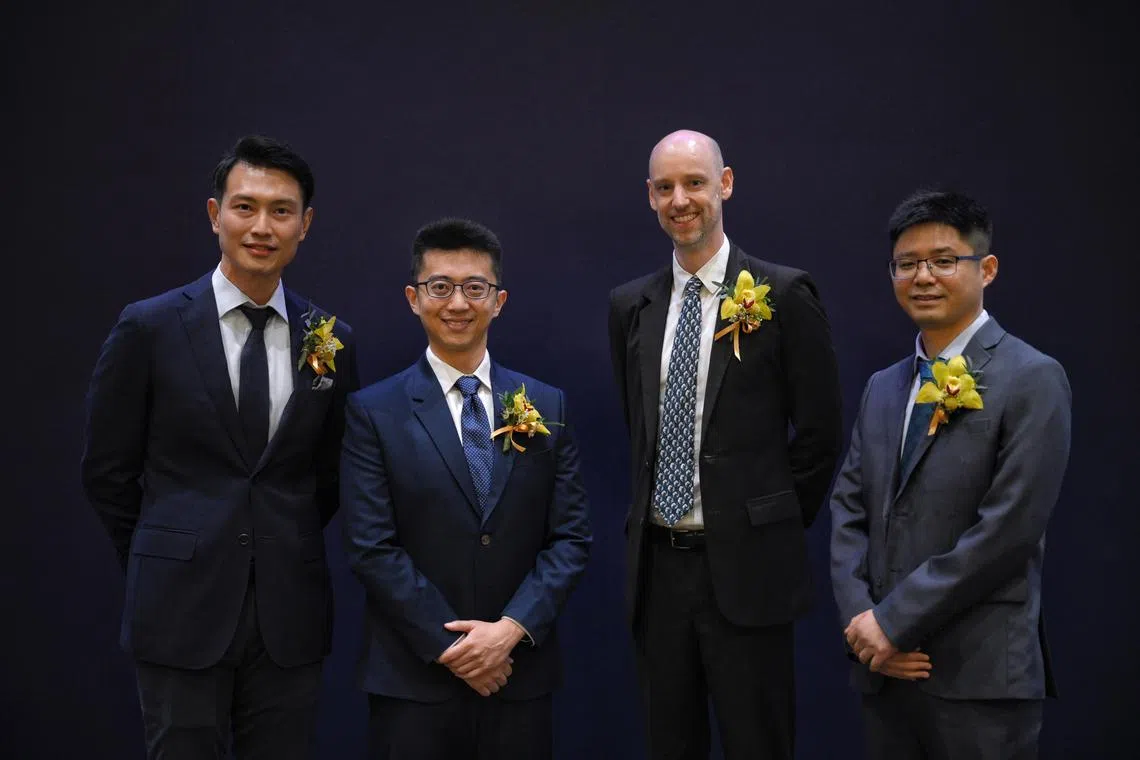
(From left) Young Scientist Award winners Daniel Ting, Li Qianxiao, Jonathan Goke and Lu Jiong at the 2024 President’s Science and Technology Awards ceremony.
ST PHOTO: MARK CHEONG
Follow topic:
SINGAPORE – Four promising young researchers here were presented with the Young Scientist Award by Deputy Prime Minister and National Research Foundation (NRF) chairman Heng Swee Keat on Sept 27.
The ceremony took place at Nanyang Auditorium, which is located within the NTU campus.
The award is administered by the Singapore National Academy of Science and supported by the NRF. The nominees are aged 40 and younger.
The Straits Times talks to these trailblazers.
Looking towards new frontiers with AI in vision research
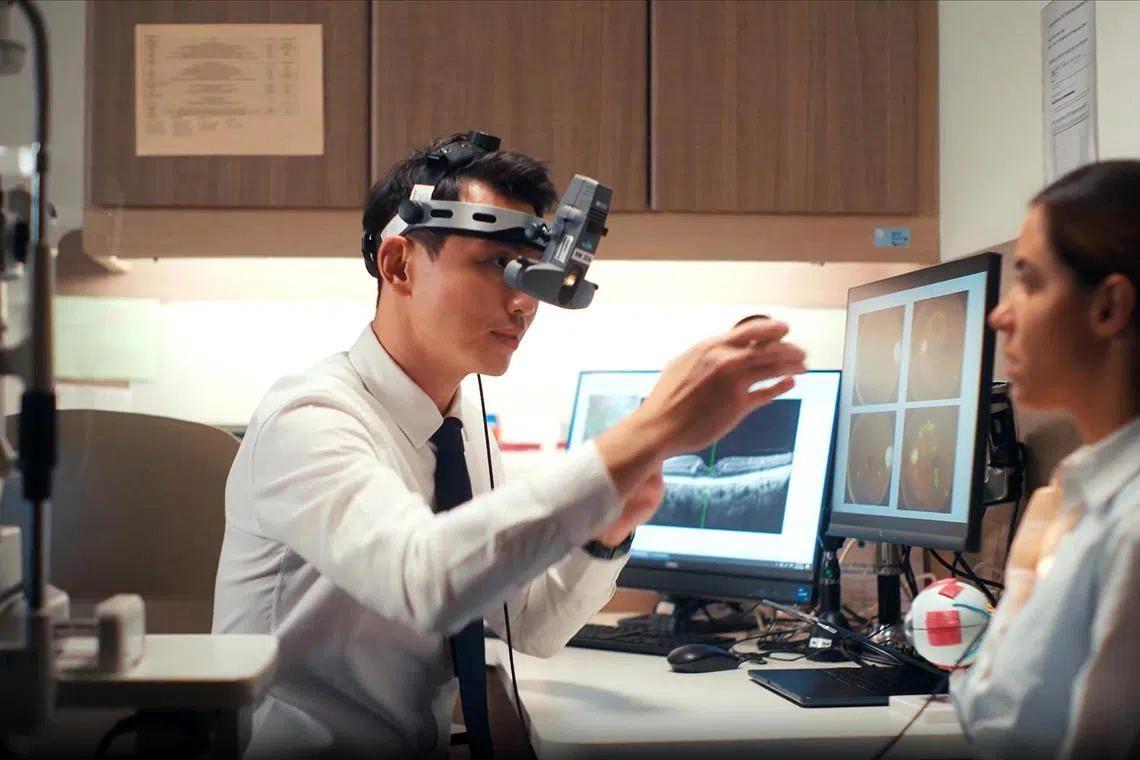
Dr Daniel Ting’s research in AI is extensive and has helped patients to receive early and accurate diagnoses.
PHOTO: NRF SINGAPORE
As a retinal surgeon, Associate Professor Daniel Ting needs to handle very fine eye structures that contain millions of neural connections.
“(These) require extreme precision and meticulous handling to avoid irreversible damage and visual loss during eye surgery,” said the senior consultant ophthalmologist from the surgical retina department of the Singapore National Eye Centre.
Dr Ting, 40, has turned to artificial intelligence (AI) to better plan out surgical procedures such as implanting an intraocular lens, which replaces the eye’s natural lens, usually as part of treatment for cataracts.
His research into AI in ophthalmology and healthcare focuses on the development of safe, ethical and responsible AI applications.
“In ophthalmology and global eye health, we developed several AI screening technologies for diabetic retinopathy, glaucoma suspect, age-related macular degeneration, and childhood and adulthood myopia to help countries where there are shortages of eye specialists to screen for potentially eye-blinding conditions,” Dr Ting said.
He added that, prior to deploying this technology to such countries, his team would test for AI biases, AI inaccuracies “and, more importantly, ensure that there is an appropriate clinical infrastructure to manage these eye patients in the respective countries”.
An example of such tech developed by Dr Ting and his team is the Singapore Eye Lesion Analyser, a deep learning AI software system that can detect threatening eye conditions –such as diabetic retinopathy, glaucoma and age-related macular degeneration – accurately and efficiently.
It has been used in more than 500,000 screenings worldwide.
“This award strengthens my commitment to leverage cutting-edge AI technologies to find more cures, create more cutting-edge health innovations by creating new intellectual properties, start-ups, and scaling Singapore’s home-grown AI innovations globally,” Dr Ting said.
“We should dare to dream, keep our eyes on the stars, keep our feet on the ground.”
AI-based reading of RNA changes for better understanding of their role in disease
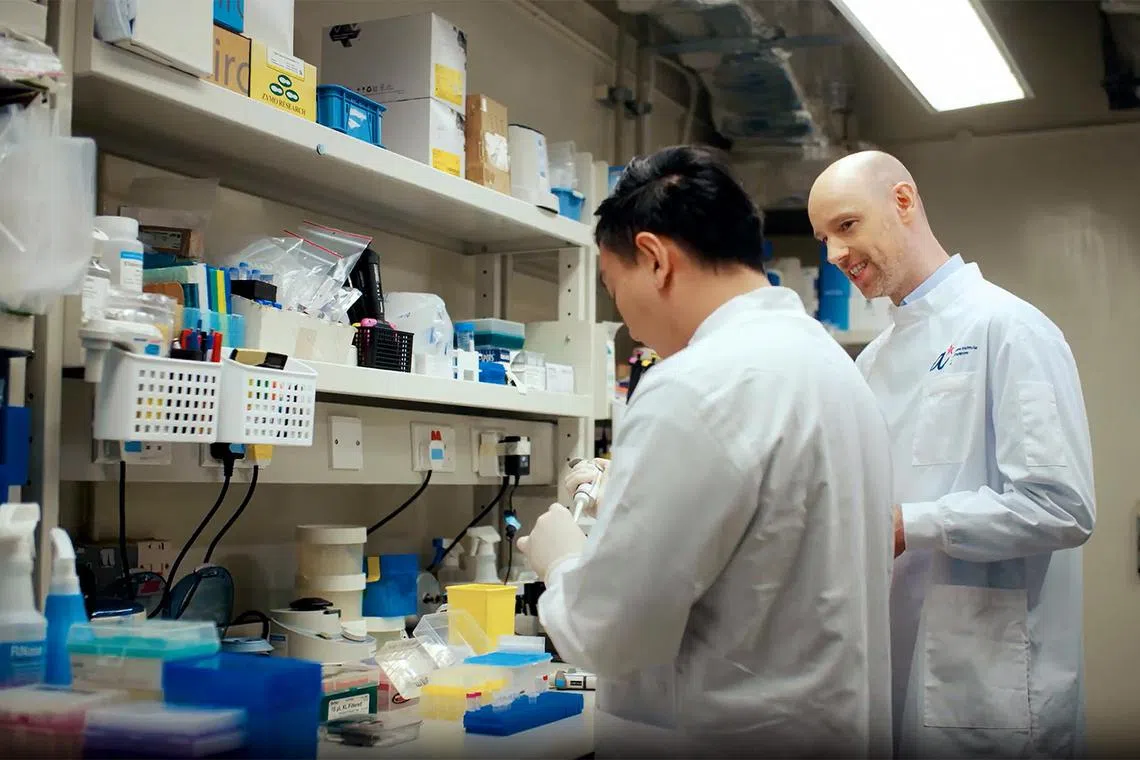
Dr Jonathan Goke working with a colleague on using computational methods to profile RNA.
PHOTO: NRF SINGAPORE
A computational biologist specialising in ribonucleic acid (RNA) research, Dr Jonathan Goke, 40, developed computational methods that accurately predict chemical changes in RNA molecules from genomic data.
RNA is the central messenger molecule that interprets the genetic information stored in DNA.
Dr Goke, a senior principal scientist at the Laboratory of Computational Transcriptomics of the Genome Institute of Singapore, said RNA has chemical molecules that may change its function.
While these RNA modifications are widespread, they are very difficult to identify.
So he developed computational methods for RNA sequencing that paved the way for new insights into RNA biology and the role RNA plays in human diseases.
In the past, identifying RNA changes required time-consuming and laborious bench experiments that were not accessible to most laboratories.
His work has, for the first time, enabled the identification of RNA changes at single-base, single-molecule resolution.
Dr Goke told peer-reviewed publication EurekAlert!: “Our AI model has only seen data from a human sample, but it is able to accurately identify RNA modifications even in samples from species that the model has not seen before.
“The ability to identify RNA modifications in different biological samples can be used to understand their role in many different applications, such as in cancer research or plant genomics.”
His contributions to identifying modified RNA from raw sequencing data have made RNA modification profiling accessible to a much broader scientific community. His computational methods have been downloaded over 200,000 times, and have been independently benchmarked as among the best in the field.
“This award is a big motivation for me to further innovate computational methods to better understand RNA. I hope it will also inspire a new generation to use data science to transform our understanding of biology and human health,” he said.
Mathematics: The art of giving the same name to different things
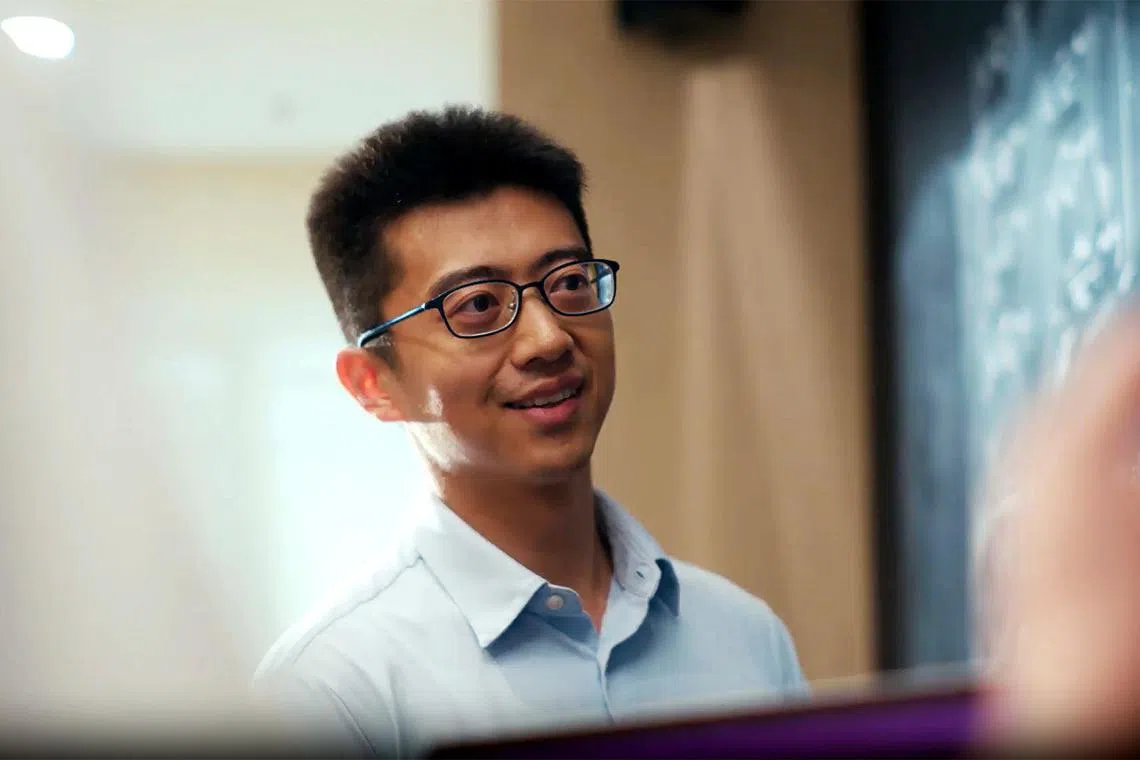
Dr Li Qianxiao, assistant professor at the Department of Mathematics in the Faculty of Science at NUS.
PHOTO: NRF SINGAPORE
His PhD adviser from Princeton University, Professor E. Weinan, once told him that applied mathematics research must always be connected to the broader scientific community, and Dr Li Qianxiao has held on to this principle ever since.
“(It) has driven my research and reminded me that I must constantly learn from and talk with scientists from other fields to formulate good research questions,” said the assistant professor from the Department of Mathematics at the NUS Science Faculty.
Dr Li, 37, has made significant contributions to the mathematical foundations of deep learning, a crucial technology that underpins the success and scaleability of modern AI systems.
His work provided rigorous mathematical frameworks necessary for understanding and improving deep learning methodologies, and laying the groundwork for future innovations in the field.
“Deep learning models use layers of ‘artificial neurons’ expressed as simple mathematical functions or operations, that process information in a way inspired by how the human brain works. These models are trained on large amounts of data to perform certain tasks that only humans used to be able to do in the past,” Dr Li explained.
AI technologies such as image recognition, translation and language models all have deep learning as a crucial component, he added.
With his team, Dr Li pioneered the understanding of how expressiveness – the ability to learn arbitrary relationships – arises in deep neural networks, and the work turned up intricate connections between this modern technology and classical mathematics.
“My work tries to understand how these ‘artificial neurons’ can express very complex relationships between things, and how best to improve the efficiency of training them. This is important as the scale of modern applications becomes larger,” he said.
“A newly released language model has more than 70 billion parameters to train, and understanding these basic principles also helps us know how best to apply this technology to new applications, like materials science and engineering.”
Mathematics to Dr Li is less about numbers and more about logic and concepts.
He said: “The famous mathematician Henri Poincare once said that, akin but somewhat opposite to poetry, mathematics is ‘the art of giving the same name to different things’.
“In fact, the dynamics of fluids, polymers and the training process of large neural networks are described by very similar mathematical models.
“In this sense, mathematics bridges our understanding across different domains, (and helps us) find commonalities and often creative ways to understand and solve problems.”
Reshaping sustainable manufacturing in fine chemicals and pharmaceuticals
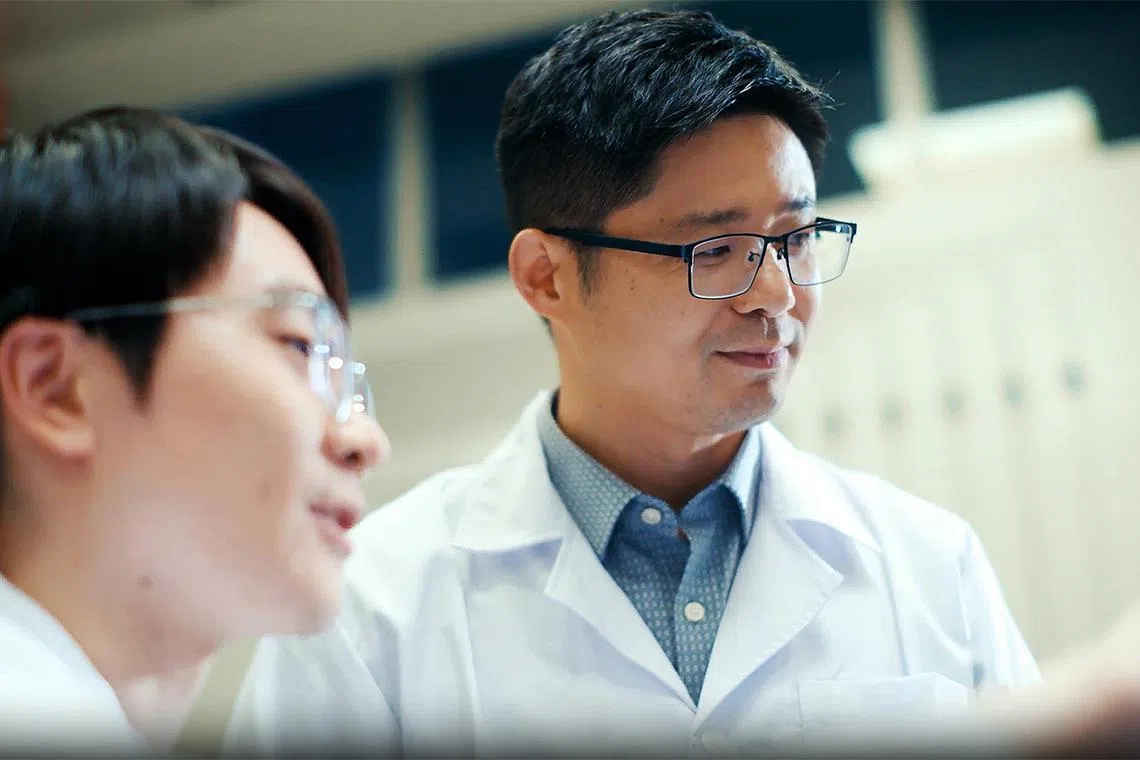
Under Dr Lu Jiong’s leadership, his team developed catalysts that not only achieved significantly higher yields and greater efficiency, but also saw a remarkable tenfold reduction in environmental impact and production cost.
PHOTO: NRF SINGAPORE
Sustainability is today’s buzzword – but it also informs chemist Lu Jiong’s research.
The fine chemicals and pharmaceutical sectors are major sources of air pollution, with some studies showing that the carbon footprint of the pharmaceutical industry surpasses that of the automotive industry. So Dr Lu, 39, and his team of researchers developed a new class of catalysts that promotes greener and more sustainable manufacturing processes.
The current catalysts used in these industries create several challenges for them, such as high production costs, difficulties in separation and reuse, and the risk of harmful metal contamination. Dr Lu’s catalysts achieved significantly higher yields and greater efficiency, as well as a remarkable tenfold reduction in environmental impact and production cost, compared with conventional options.
“This innovation creates dynamic, atomically precise catalytic centres, while ensuring high activity and recoverability, thereby promoting greener and more sustainable manufacturing processes for fine chemicals and pharmaceuticals,” the associate professor from the Department of Chemistry at the NUS Faculty of Science said.
The team put a catalyst they developed through nine consecutive cycles of chemical reactions, and discovered that it remained stable, which meant the amount of waste and risk of contamination are significantly reduced.
Analysing the environmental benefits of using this novel catalyst, they found that it achieves a carbon footprint that is 10 times lower than using conventional catalysts.
“Our catalysts could signify the dawn of a new era, where they play a pivotal role in achieving greener and more environmentally friendly chemical and pharmaceutical manufacturing,” Dr Lu said.
“I am deeply grateful for the PhD training I received at NUS, which provided a solid foundation for my academic career and helped me gain a deeper understanding of the research ecosystem here,” he added.
“Being closely connected with NUS, I feel a strong sense of responsibility to contribute to its research excellence and global impact. I am also truly honoured to receive this award, which recognises my team’s efforts and encourages me to continue driving innovation to position NUS – and Singapore – as a leader in the field.”
A few examples of industries that rely upon fine chemicals include pharmaceuticals, agrochemicals, electronics, automotive, cosmetics and construction.


